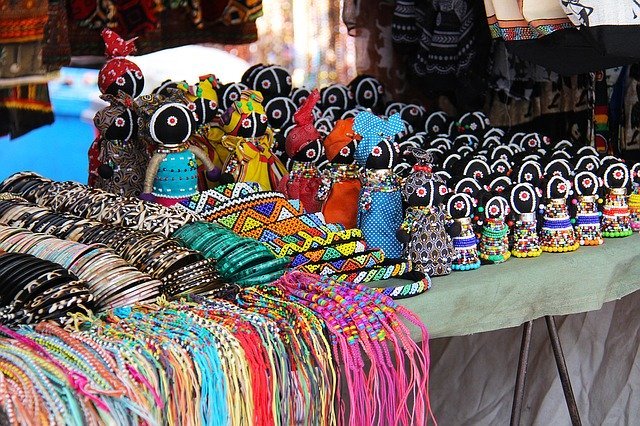
African Market by Sharonang via Pixabay
In evaluating the cryptoart market, one typically separates cryptoart from other collectibles and related sectors of the NFT industry as a whole. The resulting analysis, based on data provided by NonFungible gives one a sense of the cryptoart market as relatively small, lagging behind other sectors, but promising in its recent growth. However, what if the manner in which such sectors are segmented undervalues the actual cryptoart market?
NonFungible is an excellent source of NFT (non-fungible token) data and they periodically issue short “NFT Ecosystem Performance” reports on their blog. Recent examples include a report on “NFT Ecosystem Segmented Performance” as well as “Art, Trading Card Games, Domain Names” for the first half of 2020.
Alternate Approaches to Categorizing NFTs
In that last post the Art category focuses on the big three marketplaces, SuperRare, Known Origin and MakersPlace, while art-heavy categories such as Trading Card Games and Collectibles are reported separately. When we put all the categories together, NonFungible’s Market Overview shows us that, by their reckoning, we are now over $100 million in lifetime NFT sales volume.
Andrew Steinwold breaks up the market a bit differently in his recent response to NonFungibles work. While he also discusses cryptoart in terms of marketplaces, he separates art-heavy categories into Collectibles and Game Assets and also introduces the design-focused Culture Tokens category. But what would happen if we organized things a bit differently?
Are These Approaches Actually Categorizing Forms of Cryptoart?
I’m not criticizing the work of either NonFungible or Andrew Steinwold. They both base their takes on clear analysis and they tell you what they’re doing and how they break it down. That’s what you want from such reports. Even if you view things differently, they’ve named their terms and have valid reasons for so doing.
I’m not going to rework the numbers though I wish I had time for such a project. But I do want to point out some reasons why I think the above approaches underestimate the value of the cryptoart market by essentially moving a bunch of art into other categories!
Collectibles Such as CryptoKitties are CryptoArt
Though Steinwold separates collectibles such as CryptoKitties from game assets, projects like CryptoKitties are often referred to as games. But, however you look at it, CryptoKitties, Avastars and CryptoPunks are all essentially systems for creating and trading art.
If you look at them as collectibles, how are they not art? If you saw them on one of the cryptoart platforms they’d fit right in.
If you look at them as games, consider two scenarios:
When you take the game elements out of CryptoKitties, you still have art.
When you take the art out of CryptoKitties, there is no game.
I should insert a Keanu Reeves “Whoa” meme here, right?
Game Assets are CryptoArt
What is an Axie but a piece of art that battles other pieces of art?
What are trading cards if not pieces of art?
See the two CryptoKitties scenarios above and apply here as well.
What Happens When We Don’t Separate Art and Design?
The separation of art and design is a convention with which not all of us agree. It is easy to maintain that design and architecture are just ways of making art. Basing that separation on notions of what is practical and what is not impoverishes all forms of art and of what it means to be human.
That said, Steinwold’s “Culture Tokens” are essentially graphic art and product design. Virtual worlds such as Decentraland and Cryptovoxels are essentially massive design projects full of art, graphic art, architectural design and designed products.
All the Interesting Forms of NFTs are CryptoArt
The most boring NFTs are things like tickets, real world stuff and anything else that isn’t cryptoart. The closer one gets to accounting and record-keeping the further one gets from art making. These practices are essential to an art market, but NFTs like tickets are about accounting and record-keeping without art and they are boring as fuck.
So, if you’re crunching NFT numbers, please consider what happens when you include all the art in the cryptoart market.
And please keep in mind when you see headlines about the NFT market that they are primarily headlines about cryptoart.
